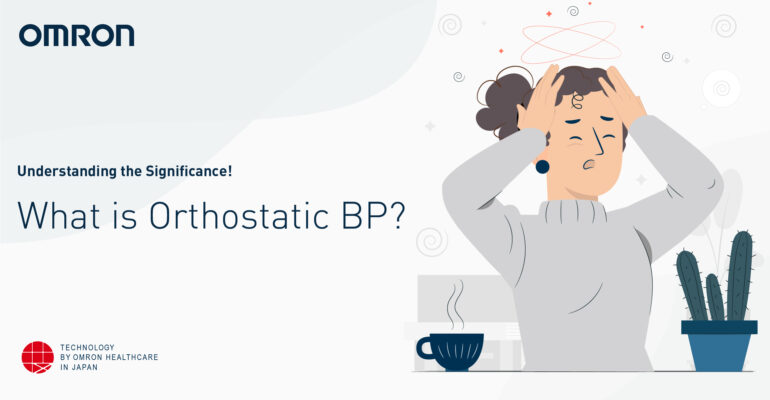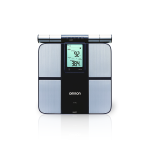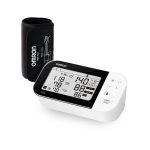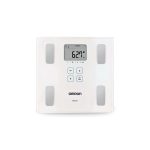What is Orthostatic BP?
December 28, 2022 2023-09-11 15:43What is Orthostatic BP?

What is Orthostatic BP?
Orthostatic blood pressure (BP) is the measure of changes in blood pressure due to a change in body position. When a person stands up from a sitting or lying position, their blood pressure initially drops due to the force of gravity. The body compensates for this drop by increasing the heart rate and narrowing the blood vessels to maintain blood pressure within a normal range.[1]
Orthostatic hypotension affects roughly 20% of older people, especially those who live in long-term care residences. It’s also common among people who’ve been on bed rest or given birth recently. Also, teens having growth spurts can experience orthostatic hypotension.[2]
Orthostatic blood pressure Measures involve taking readings while a person is supine and then again after standing up. A slight drop in blood pressure upon standing, followed by a quick increase, is a normal and healthy physiological response. However, if the systolic blood pressure drops by 20 mmHg or more or the diastolic blood pressure drops by 10 mmHg or more upon standing, orthostatic hypotension may be diagnosed. Therefore, taking blood pressure readings in different positions and observing changes is crucial in diagnosing orthostatic hypotension.[3]
Symptoms of Orthostatic BP:
The symptoms of orthostatic blood pressure can vary depending on the severity of the drop in blood pressure. Mild symptoms may include lightheadedness or dizziness upon standing, while more severe symptoms may include fainting or loss of consciousness. Other symptoms may include blurred vision, nausea, fatigue, or confusion.[4]
If you experience any of these symptoms, it’s important to speak with a healthcare provider to determine the underlying cause and appropriate treatment plan.
Causes of orthostatic BP:
- Dehydration: A lack of fluids in the body can cause a drop in blood volume, leading to a drop in blood pressure while standing up.
- Medications: Certain medications, such as diuretics, beta-blockers, and alpha-blockers, can cause a drop in blood pressure when standing up.
- Heart problems: Heart conditions such as heart failure, heart valve problems, and arrhythmias can lead to a drop in blood pressure upon standing.
- Nervous system disorders: Disorders that affect the nervous system, such as Parkinson’s disease, multiple system atrophy, and autonomic neuropathy, can affect the body’s ability to regulate blood pressure.
- Ageing: As people age, their blood vessels may become less elastic, leading to decreased blood pressure regulation.
- Prolonged bed rest: Being in a prone position for an extended period of time can cause blood to pool in the lower extremities, leading to a drop in blood pressure upon standing.
- Pregnancy: Hormonal changes during pregnancy can cause blood pressure to drop upon standing.
- Nutritional deficiencies: Low vitamin B12 or folic acid levels can lead to anaemia, which can cause orthostatic hypotension.[5]
Complications of Orthostatic BP:
- Falls and injuries: A sudden drop in blood pressure upon standing can cause dizziness or fainting, leading to a fall and injuries.
- Stroke: Orthostatic hypotension can increase the risk of stroke, especially in Geriatric patients
- Heart problems: Orthostatic hypotension can cause a decrease in blood flow to the heart, leading to chest pain, heart palpitations, and even heart attack.
- Kidney damage: A drop in blood pressure can reduce blood flow to the kidneys, potentially leading to kidney damage.
- Cognitive impairment: Reduced blood flow to the brain can lead to cognitive impairment, including difficulty with memory and concentration.
- Reduced quality of life: The symptoms of orthostatic hypotension, such as dizziness and fatigue, can significantly impact a person’s quality of life.[6]
Prevention Measures for Orthostatic BP:
The prevention measures for orthostatic blood pressure depend on the underlying cause. However, some general prevention measures can help reduce the risk of developing orthostatic hypotension. These measures include:
- Staying hydrated: Drinking plenty of fluids can help maintain adequate blood volume and prevent a drop in blood pressure upon standing.
- Changing positions slowly: When going from a seated or lying position to standing, it’s important to do so slowly and gradually to allow the body time to adjust.
- Avoiding sudden movements: Sudden movements, such as getting up quickly or bending over, can cause a sudden drop in blood pressure, so it’s important to avoid them.
- Exercise: Regular exercise can help improve circulation and blood pressure regulation.
- Wearing compression stockings: Compression stockings can help prevent blood from pooling in the lower extremities, reducing the risk of a drop in blood pressure upon standing.
- Avoiding hot environments: Hot environments can cause blood vessels to dilate, leading to a drop in blood pressure.
- Adjusting medications: If medications are causing orthostatic hypotension, a healthcare provider may adjust the dosage or prescribe a different medication.
- Addressing underlying medical conditions: Treating underlying medical conditions such as diabetes, heart problems, or nervous system disorders can help manage orthostatic hypotension.[7]
The Omron BP monitor can be useful for individuals with orthostatic hypotension to monitor their blood pressure readings at home. By measuring blood pressure in a supine or lying position and then again after standing, individuals can determine if they are experiencing a drop in blood pressure upon standing.
The Omron BP monitor offers features such as automatic inflation and memory storage for multiple readings, making it easy to track changes in blood pressure over time. It’s important to note that while the Omron BP monitor can be a useful tool, it should not be used as a substitute for medical advice or treatment.
Wrap-Up:
It’s important to speak with a healthcare provider if you are experiencing symptoms of orthostatic hypotension to determine the underlying cause and appropriate treatment plan. Managing the condition can help prevent complications and improve overall health and well-being.
Reference:
- https://medlineplus.gov/genetics/condition/orthostatic-hypotension/
- https://pubmed.ncbi.nlm.nih.gov/30169579/
- https://www.mayoclinic.org/diseases-conditions/orthostatic-hypotension/diagnosis-treatment/drc-20352553
- https://my.clevelandclinic.org/health/diseases/9385-low-blood-pressure-orthostatic-hypotension
- https://www.healthgrades.com/right-care/symptoms-and-conditions/orthostatic-hypotension
- https://my.clevelandclinic.org/health/diseases/9385-low-blood-pressure-orthostatic-hypotension
- https://www.medicalnewstoday.com/articles/318158#Treatment-and-prevention






